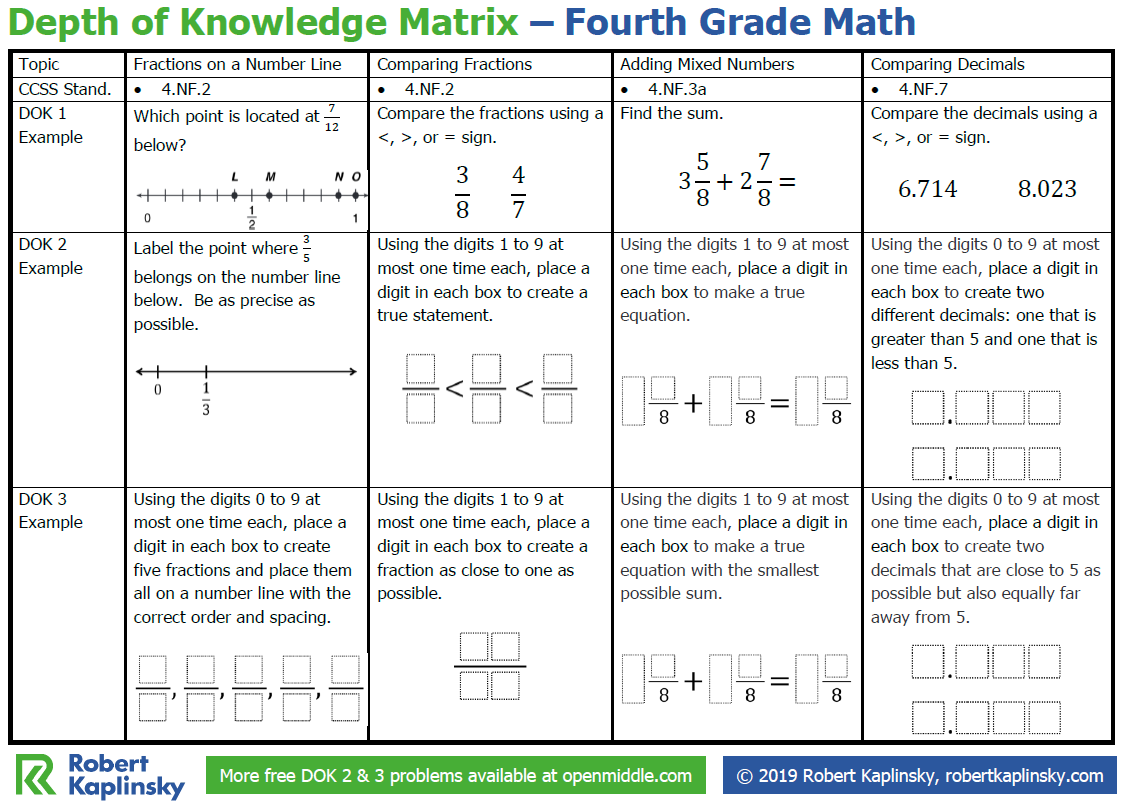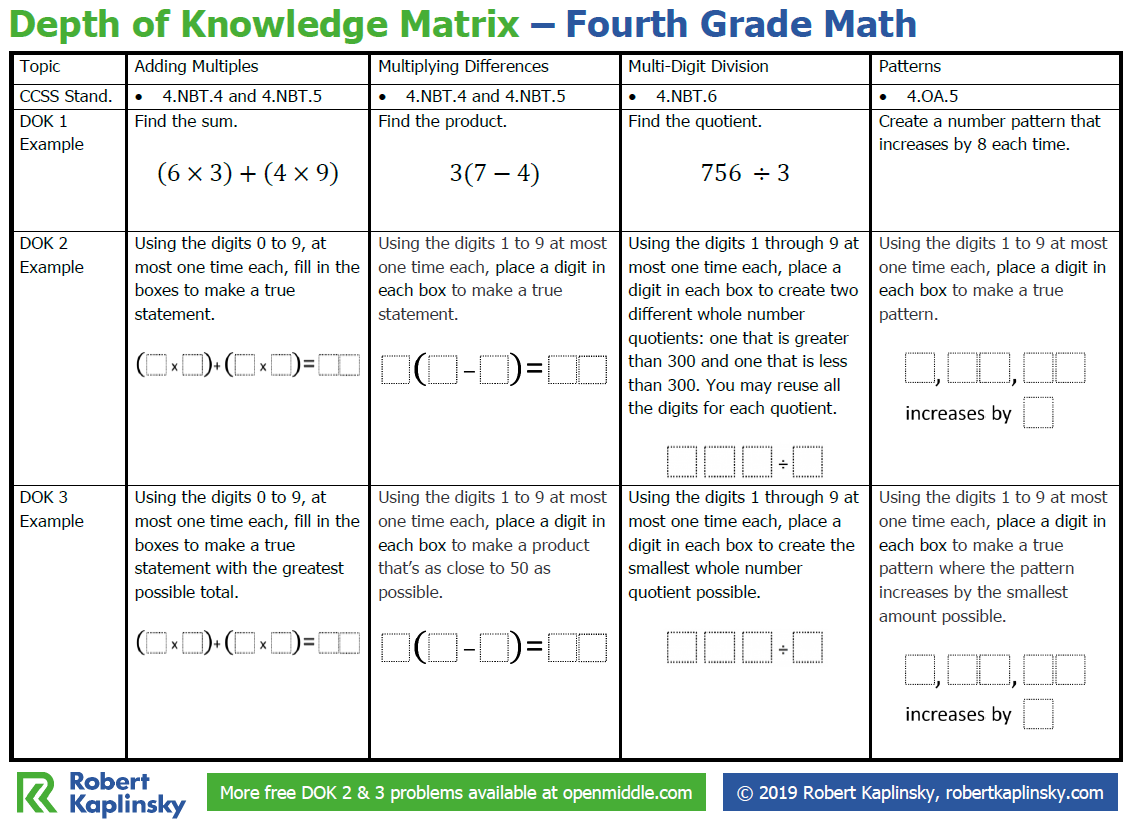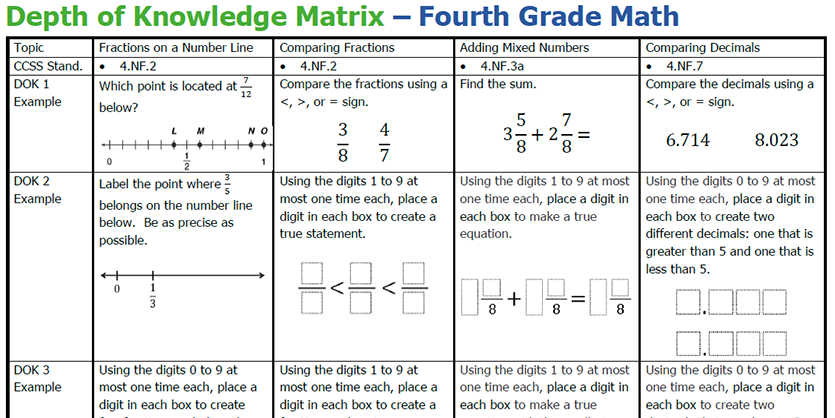[Looking for other grade levels? The button below allows you to download all of them or you can look here.]
If you’ve been looking for a way to challenge your students that was simultaneously accessible for all students but still challenged your high flyers, then you’ll love the problems on my Open Middle Depth of Knowledge matrix. I’ll be releasing each grade level separately but if you want to see all of them now, you can download high quality, printable PDFs by clicking the button below.
It includes:
- Elementary & Secondary matrix (a selection from 8 grade levels)
- Elementary matrix (kindergarten through 5th)
- Secondary matrix (6th grade through calculus)
- 3rd, 4th, 5th, 6th, 7th, 8th, Algebra 1, Geometry, and Algebra 2 matrices (separate matrices for each grade level)
You’ll notice that the first problem in the column is traditional and familiar. It’s something you’d expect students in your class to eventually be able to figure out. Then look at the Open Middle problems at DOK 2 and DOK 3. You’ll notice that they’re on the same topic, yet are significantly more challenging. You may start to wonder whether or not your students can solve them, and what that may imply about how well they understand the concept.


- I’ve recorded a free webinar with versions for elementary (K-5) and secondary (6-12) math teachers called Why We Should Reconsider Using Worksheets (And What We Should Be Doing Instead) where I make the case for less worksheets and more Open Middle problems like these.
- I’ve written a book called Open Middle Math: Problems That Unlock Student Thinking, Grades 6-12 that walks you the entire process of using problems like these including:
- how to choose a problem
- how to prepare for a lesson
- how to facilitate classroom conversations
- what to do when things don’t go as expected
- how to make your own Open Middle problems
It’s available now in paper or Amazon Kindle versions.
- I’ve created an online workshop called Empowered Problem Solving that I offer every fall and spring where I dive deep into how to implement these problems (and others like my real world lessons) so that you feel prepared to use them with your students.
- The DOK 2 fractions on a number line problem inspired by Illustrative Mathematics.
- The DOK 2 multiplying decimals problem written by .
- The DOK 3 comparing fractions problem written by Peter Morris.
- The DOK 2 adding multiples problem written by my son, Owen Kaplinsky.
- The DOK 2 multiplying differences problem written by my son, Owen Kaplinsky.
- The DOK 3 multiplying differences problem written by my son, Owen Kaplinsky.
- The DOK 3 multi-digit division problem written by Ellen Metzger.


I just watched your high school webinar on “Why use word problems?” It was really interesting and I am seriously considering the 6 week workshop. However, I am wondering how I could implement these types of problems in a blended learning/self-paced math credit. I teach at a continuation high school where the population has struggled in school for many years.
The problems are so creative but it seems imperative that there is a lot of thoughtful discussion between students and the teacher. I’m not sure if I could support that and provide a “self-paced” credit.
What do you think?
This is a good question and I have two main thoughts:
– While great conversations come from Open Middle problems, it doesn’t mean that they’re the entire value. I would absolutely love for kids to have these conversations, but the solo exploration of these math problems is very valuable on it’s own. I imagine you enjoyed working on problems as well, even if you didn’t get to chat with anyone about them.
– Also, it can’t really hurt to try it out. As I mention in my workshop, I absolutely recommend that you start with a problem well below their grade level to get them familiar with the experience. Here’s a great one to get them going: https://www.openmiddle.com/close-to-1000/
So yeah, I’d try it out with them. I’ve used them in my school district’s continuation school and it went well there as well. It might also lead to some surprising results. For example, sometimes we expect *these* students to excel and *those* students to struggle. What I’ve found is that sometimes I get the opposite results. Students who typically excel wind up struggling because the steps in their notes no longer work. Kids who normally check out are deeply engaged because they don’t feel like robots and they’ve now got a doable challenge they want to work on.
Hope this helps you with your next steps.